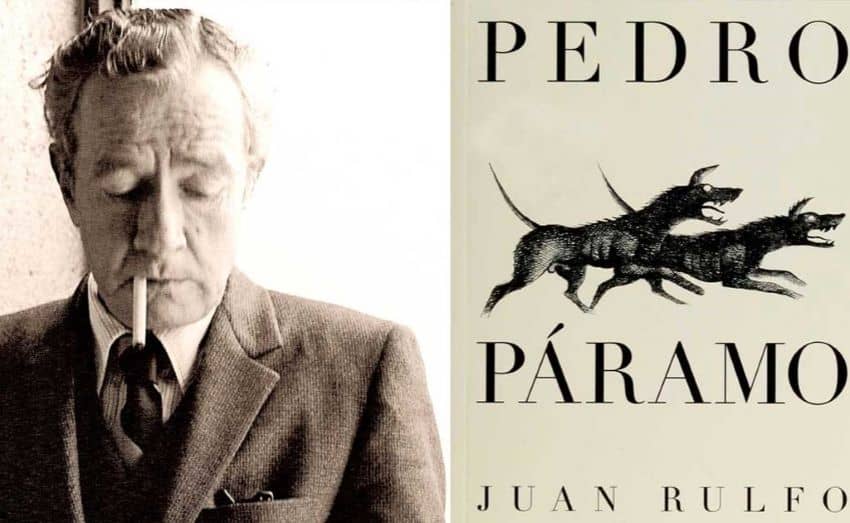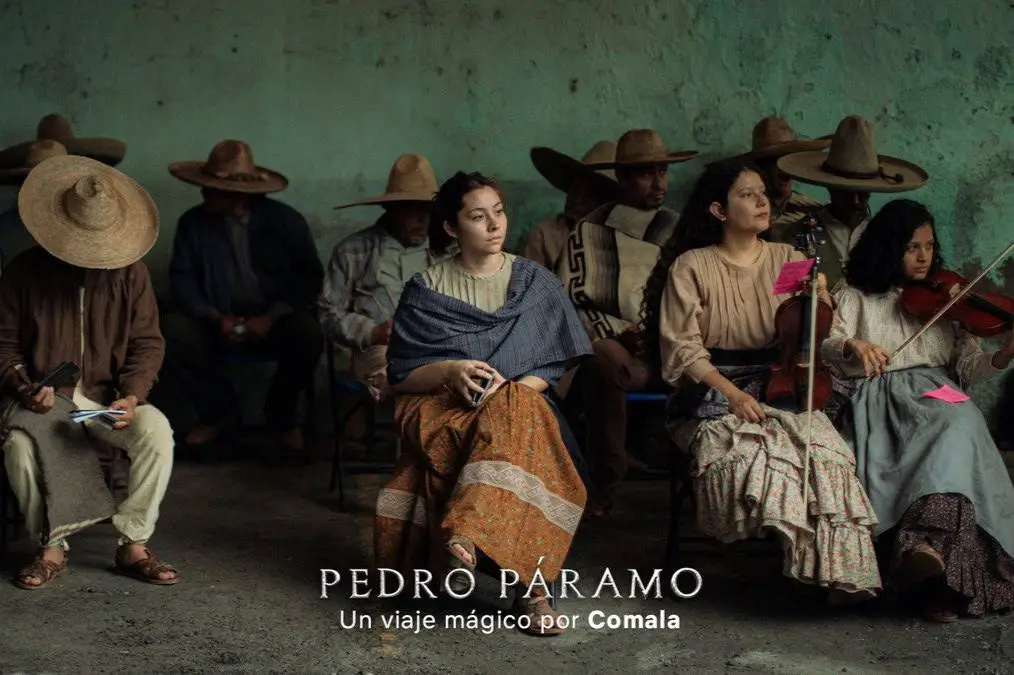Recently released on Netflix, “Pedro Páramo” is the fourth onscreen reimagining of Juan Rulfo’s classic 1955 novel of the same name. This sharp new adaptation is directed by Rodrigo Prieto, the enigmatic and brilliant 58-year-old responsible for the cinematography of films including “Silence,” “Barbie,” “The Wolf of Wall Street,” “Amores Perros” and “Brokeback Mountain.”
The film presents the pilgrimage of Juan Preciado, played by Tenoch Huerta, a grieving man who travels to the remote village of Comala in search of a father he never knew, a wealthy landowner named Pedro Páramo, played by Manuel García-Rulfo of “The Lincoln Lawyer.” However, in Comala, nothing is what it seems.
It is no exaggeration to say that Juan Rulfo’s novel changed the course of Latin American literature. A precursor of magical realism, novelists and critics from various around the world, including Jorge Luis Borges, Gabriel García Márquez and Susan Sontag, agree in describing Juan Rulfo’s short book as one of the greatest works of literature ever written. To date, the novel has been translated into more than 45 languages.
What you need to know about ‘Pedro Páramo’
For the uninitiated, Rulfo’s novel is a deeply fragmented and surrealistic rural tale that throws away the boundaries between the living and the dead. Set in the context of the Mexican Revolution and the Cristero War, the plot is essentially composed of two constantly meandering narrative threads.
The story of Pedro Páramo is, at first, that of the eponymous character’s son, Juan Preciado, who heads to Comala to fulfill the promise he made to his recently deceased mother: to search for his father, the heinous boss of the Media Luna hacienda. From there, Preciado, our narrator, finds himself in a ghost town, on the “burning embers of the earth, at the very mouth of Hell,” and several spectral villagers help him reconstruct his unsuspected and lurid family history.

The second plot focuses on Pedro’s life, his adolescence as a failed scion and his rise to power as a feudal lord. The father of countless illegitimate children, we learn that Pedro is an unscrupulous tyrant driven by overwhelming evil. It seems that his only weakness is his first and only love, Susana San Juan, played by Ilse Salas. In a way, Pedro Páramo, the “living resentment,” is the man who had everything and ended up with everything and everyone out of sheer viciousness.
As the ghosts of Comala guide Juan Preciado between the present and the past, truths that cross time, space and generations are exposed.
Without contradicting the original text, the adaptation becomes a meditation on people and their sins, touching on themes such as abandonment, the search for one’s origins, violence, hate, death and the afterlife. “This film is an exploration of the destructive power of rancor, of how someone like Pedro Páramo, like you, can hold power and screw everyone else,” director Rodrigo Prieto told newspaper El Universal in October.
What the Netflix adaptation brings to the table
The Jalisco-born Rulfo is not one of the easiest writers to adapt to the big screen, and even less so in the case of a fragmented and elusive work like “Pedro Páramo.” However, Rodrigo Prieto, four-time Oscar nominee for best cinematography, and his screenwriter Mateo Gil, present a generally faithful look at the lord of Comala, his land, his lovers and his children.

Although Gil’s adapted screenplay sometimes feels dizzyingly condensed, the new film manages to retain the core elements of the source material and translate Rulfo’s singular narrative structure to the screen. As in the novel, the story interweaves the present of the deceased and the past of the living in an unsettling way. Both times slide side by side and intertwine without room for loss.
From flying animals to black and white images of a woman surrendered to the sea, Netflix’s “Pedro Páramo” is an ingenious display of magical realism. This film will be remembered, among other things, for its dazzling cinematography by Nico Aguilar, formidable production design by Eugenio Caballero and Carlos Y. Jacques, compelling sets by Daniela Rojas, and inspired musical score by Gustavo Santaolalla.
In this sense, Prieto and his team construct impressive filmic spaces that aptly capture the aesthetic, emotional climate and rhythm of the different epochs through which Comala passes. We see a world in ruins and decay, full of grieving souls and decomposing bodies and simultaneously find a Comala brimming with life. As the narration explains the Comala that once was, we understand its decline and the tragedy it represents.
As always with the adaptation of an iconic literary work, the stakes are high. But Rodrigo Prieto understands the monumentality of Rulfo’s work, and his debut feature does justice to the Mexican classic. Prieto’s “Pedro Páramo” is the most convincing film version of the novel to date. For 130 minutes, we are treated to a deeply disturbing, labyrinthine, dreamlike and beautifully rendered film.
